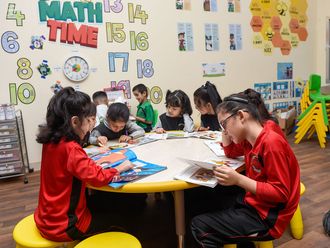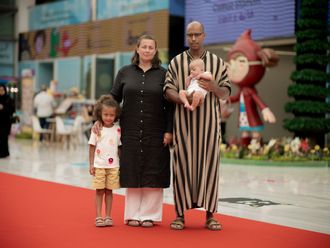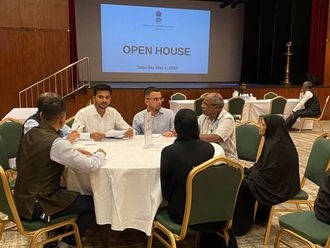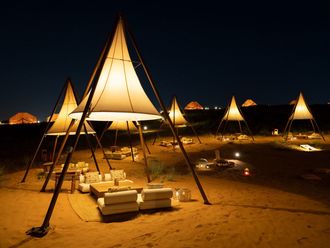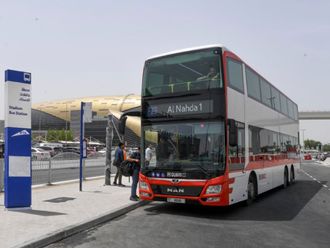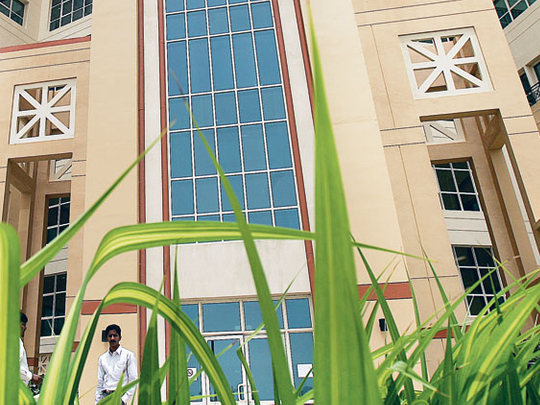
If you had set foot on a university campus on any given day, you would have seen students in the hundreds milling about or in lecture halls. These days, however, you might mistake some Dubai universities for ghost towns.
Amidst the current global econ-omic climate, new tertiary institutions in Dubai such as Michigan State University (MSU) Dubai and Rochester Institute of Technology (RIT) are struggling to attract enough qualified students to fill their classrooms. Well established universities, such as the American University of Sharjah, have also reported smaller intakes this semester.
Limited choice
"Sometimes you'll find just seven people in one class," said MSU Dubai student Osama Wathab Basal. The first-year construction management major said the university, which officially opened in 2008, is similar to a high school because "there is about the same number of students in a class."
Dwindling numbers have also left some students unhappy with fewer programme choices. "A smaller number of students means fewer majors and electives available," said Basal, who is trying to be positive about his university experience.
He said the option to choose less taxing elective modules, such as art or music, to bring up his average at MSU isn't available. "Instead I have to take sociology, which is not much of an elective; it's a whole other major."
However, students like Neha Reyaz Khandwani at the Canadian University of Dubai said smaller classes are a positive thing. "Most of my classes don't exceed 40 students, which is great because students get individual attention from the professor."
Khandwani, who attended the University of Toronto, said smaller classes were rewarding compared to Canada where classes were filled with hundreds of students. "Trying to ask a question in some of my classes was crazy," she said.
"Nobody could have anticipated the meltdown, which has certainly had a negative effect on our student marketing," said Brendan Mullan, Executive Director of MSU. With only 85 undergraduates, MSU is seeking to increase its student body with scholarships offering half-price tuition to the first 100 qualified transfer applicants for the semester starting this month.
Staying in the Gulf
"We've had close to 200 transfer applications, some from other universities in the UAE, but others from India, Pakistan, Saudi Arabia and Oman," Mullan said. He said that while the break-even point for the campus was now expected to be five years, up from the original goal of three, MSU is determined to remain in the Gulf.
Two-year-old Murdoch University Dubai (MUD) is experiencing the same problem with admissions almost 30 per cent below its estimated target, the institution's chairman, Rakesh Wahi, said. "We launched the university when everything started to take a dive. Although timing does not meet expectations you must live through economic cycles. "MUD is a business and we should not take a short-term view."
The issue, he said, is about supply and demand as everyone is talking about shrinking student numbers. All institutions are trying to get a share of the available market, said Wahi. Wahi said the main problem in the UAE higher education sector was that "the UAE population is a transient one and if industry suffers there is a population decline, this doesn't normally happen in most markets."
The trend of people going back to further their studies during the recession did not apply to the UAE due to visa and residency regulations and a relatively high cost of living.
Distinguishing themselves
RIT, which began only with graduate programmes, accepted almost 100 students for the 2009 academic year. However, Mustafa Abu Shagur, president of the Dubai campus, said it ended up with only about 50, spread among electrical engineering, computer networking, finance, and service and leadership studies. RIT plans to start an undergraduate programme next year, Abu Shagur said.
"Our plan for next year is 100 to 120 students," he said, "which we think we can get, because we've studied the market very closely and we believe we can distinguish ourselves in certain programmes."
American University of Ras Al Khaimah (AURAK), formerly George Mason University which shut down in May 2009, still has its original cohort of 85 undergraduate students. "We haven't gone through a full year ... January is our first external admissions," said an AURAK official who asked to remain anonymous.
The official said AURAK has recently refurbished its campus and now houses two lavish, six-storey dormitories and a large student centre with an aim of targeting potential students from the UAE's northern emirates, Pakistan and north Africa.
Solutions
When asked if discounting tuition fees was a good way to keep universities afloat by attracting students, Wahi said short-term planning was not wise in the current economic climate. "Murdoch currently offers Dh1 million in scholarships, so it's not about discounting; it's about sustaining and keeping standards."
Mullan said: "We are not compromising on quality, even if that means it takes us longer to gain traction here. We actually turned down 30 per cent of our applicants last fall."
— With inputs from New York Times News Service



_resources1_16a30b2f411_small.jpg)
